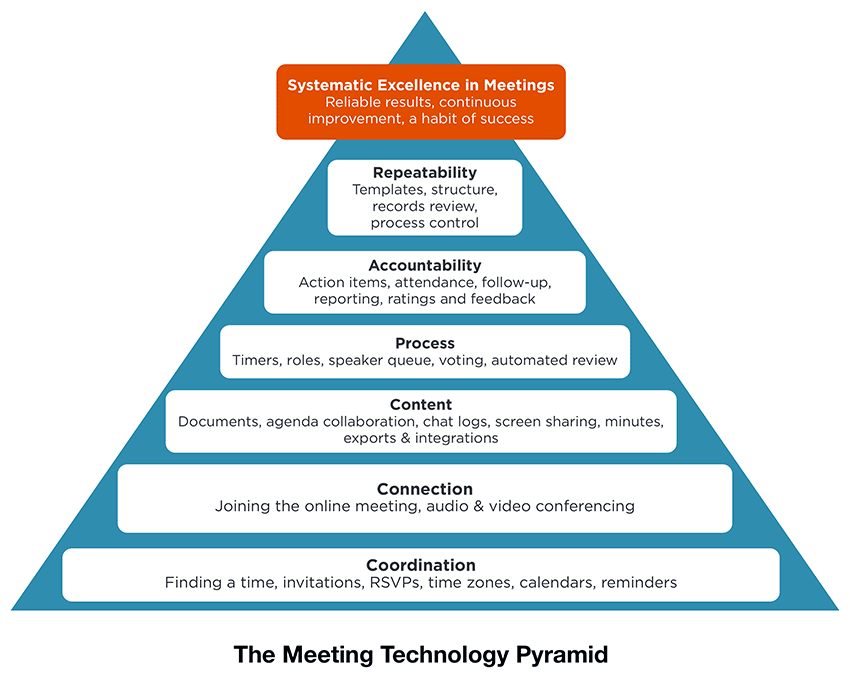Lucid Meetings is an online meeting management platform for designing, running, and continuously improving the business meetings that power your organization’s success.
Most people have never used a meeting management platform, and aren’t quite sure what to expect. If that’s true for you, this article will help. In it, we’ll cover:
- What problems meeting management platforms solve
- The common features found in all meeting management platforms
- When to use a meeting management platform, and when to choose something else
Problems Addressed
Meeting management platforms are designed to support teams and organizations working to solve these problems.
Problem: Lack of time or resources needed to plan and run effective meetings.
Meeting management platforms save organizers time with:
- All-in-one meeting features, reducing time switching between platforms
- Pre-built meeting agendas
- Simple prompts to ensure busy people don't forget a step
- Distributed responsibility, so everyone can work on the meeting together.
Problem: Inadequate meeting facilitation skills
Meeting management platforms help people run better meetings with:
- Built-in tips
- Facilitator guides, providing step-by-step help for running important conversations
- In-meeting reinforcement of best practices
Problem: Inconsistent adherence to meeting processes.
Meeting platforms help organizations design and scale effective meeting practices with:
- Template-driven meetings
- Transparency into meeting history
- Meeting performance reporting
- Granular process and access control
Problem: Undocumented or untraceable meeting results; lack of follow-up
Meeting platforms make it easier to see what happens in business meetings with:
- Built-in note taking and action tracking
- Instant meeting records in multiple export formats
- Email and API-based distribution of meeting records back into the business
Problem: Poor overall meeting performance
Meeting platforms help organizations improve the quality of their meetings with:
- Built-in feedback and ratings
- Expert-authored meeting templates for running common and/or challenging meetings
- Automated performance reporting
Common Features in Meeting Management Platforms

All meeting management platforms have support for:
- Creating meeting agendas
- Inviting people to review the meeting agenda
- A way to capture meeting notes, including decisions and action items
- Meeting timers
- An archive of past meeting records
- Meeting record exports to one or more file formats
Some meeting management platforms include:
- Organization of meetings by team or project
- Meeting performance reports
- Meeting templates
- Integrations with one or more business systems
Only a few meeting management platforms include:
- Integrated audio-video conferencing and screen sharing
- Open APIs and extensive business system integrations
- Formal decision support for capturing motions
When to use meeting management software, and when to use something else
 Best
Best
Meeting management software is perfect for planning and running:
- Regular team meetings
- Project meetings
- Board and committee meetings
- Program and development meetings
- Planning meetings
- Informational interviews
- Management meetings, one-on-ones, and hiring meetings
- Sales meetings
 Fair
Fair
Meeting management software can be used, but is overkill for:
- Quick ad-hoc calls
- Informal relationship-building calls
 Poor
Poor
Meeting management software is not a good fit for:
- Webinars
- Large group online training
- On-demand remote support
- Virtual conferences and large scale all-day events
